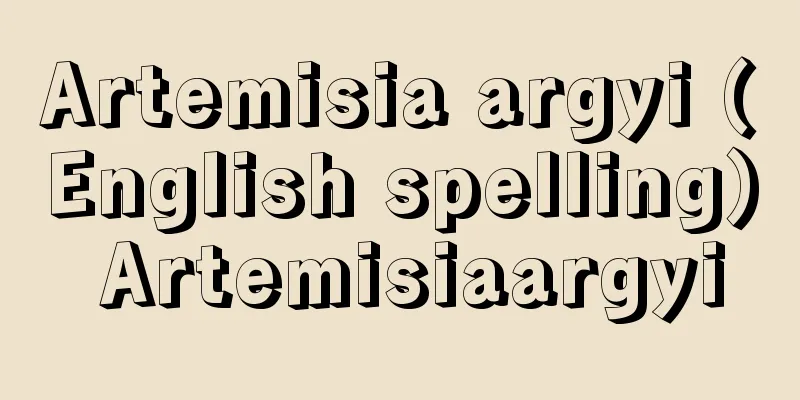Dancer of Izu - Izu no Odoriko

|
An early short story by Kawabata Yasunari. Published in Bungei Jidai in January and February 1926 (Taisho 15), and published by Kinseido in 1927 (Showa 2). The narrator, a student at First Higher School, travels to Izu and becomes travelling companions with a group of traveling performers. The 14-year-old dancer's honest kindness helps to ease the sulky feelings of the narrator, an orphan, but they soon have a sad separation. The girl's lovely figure, on the border between childhood and adulthood, is captured clearly, and the excitement and sorrow of youth are vividly expressed. Kawabata traveled to Izu in 1918 (Taisho 7) while he was a student at First Higher School, and this story is based on his experiences at that time. The writing style is unusually straightforward for works from the Shinkankakuha period, when technique prevailed, and the story gradually became regarded as Kawabata's masterpiece. Since it was made into a silent film in 1933 (Showa 8) directed by Gosho Heinosuke and starring Tanaka Kinuyo, it has been adapted into film many times and has become a kind of classic work that evokes nostalgia. [Tetsuya Hatori, August 21, 2018] movieJapanese film. The first film adaptation of Kawabata Yasunari's novel The Dancer of Izu was in 1933 (Showa 8) at Shochiku Kamata, directed by Gosho Heinosuke and starring Tanaka Kinuyo and Obinata Den (1907-1980), called Love Blooms: The Dancer of Izu. After the war, five films based on the novel were made: in 1954 (Showa 29), directed by Nomura Yoshitaro at Shochiku, starring Misora Hibari and Ishihama Akira (1935-); and in 1960, directed by Kawazu Yoshiro (1926-1972), starring Wanibuchi Haruko (1945-) and Tsugawa Masahiko (1940-2018), at Shochiku. In 1963, at Nikkatsu, director Nishikawa Katsumi (1918-2010) starred Yoshinaga Sayuri (1945- ) and Takahashi Hideki (1944- ). In 1967, at Toho, director Onchi Hideo (1933- ) starred Naito Yoko (1950- ) and Kurosawa Toshio (1944- ). In 1974, director Nishikawa Katsumi starred Yamaguchi Momoe (1959- ) and Miura Tomokazu (1952- ). The roles of the dancers were played by idol stars of each era. A high school student from First High School travels with a traveling troupe of performers, crossing Yugashima and the Amagi Pass to Shimoda. He develops a faint crush on one of the troupe's dancers and they get to know each other, but when they arrive in Shimoda, they have to say goodbye. The final scene, in which the dancers, Yoshinaga Sayuri and Yamaguchi Momoe, wave their hands forever, is a testament to the skill of Nishikawa, who has directed it twice before. [Shohei Sakajiri August 21, 2018] "The Dancer of Izu" (Shincho Bunko) [References] | | | | |Source: Shogakukan Encyclopedia Nipponica About Encyclopedia Nipponica Information | Legend |
|
川端康成(かわばたやすなり)の初期の短編小説。1926年(大正15)1、2月『文芸時代』に発表、1927年(昭和2)金星堂刊。一高生の「私」は伊豆の旅で旅芸人の一行と道連れになった。14歳の踊子の素直な好意に、孤児である私のいじけた気持ちものびのびと解きほぐされるが、しかしやがて悲しい別れがくる。大人と子供の境目の少女の可憐(かれん)な姿態がくっきりと定着され、青春のときめきと悲哀とがみずみずしく表現されている。1918年(大正7)一高時代の川端は伊豆の旅をしたが、これはそのときの体験に基づいている。技巧の勝った新感覚派時代の作品としては珍しくすなおな筆致で、しだいに川端の代表作とみなされるようになった。1933年(昭和8)五所平之助(ごしょへいのすけ)監督、田中絹代主演で映画化(サイレント映画)されて以来、たびたび映画化され、人々の郷愁をそそる一種の古典的作品となっている。 [羽鳥徹哉 2018年8月21日] 映画日本映画。原作の川端康成『伊豆の踊子』を最初に映画化したのは、1933年(昭和8)、松竹蒲田(かまた)で五所平之助監督、田中絹代と大日方傅(おびなたでん)(1907―1980)主演の『恋の花咲く 伊豆の踊子』である。戦後、同原作の映画は5本つくられた。1954年(昭和29)、松竹で野村芳太郎(のむらよしたろう)監督、美空ひばりと石濱朗(いしはまあきら)(1935― )。1960年、松竹で川頭義郎(かわずよしろう)(1926―1972)監督、鰐淵晴子(わにぶちはるこ)(1945― )と津川雅彦(つがわまさひこ)(1940―2018)。1963年、日活で西河克己(にしかわかつみ)(1918―2010)監督、吉永小百合(よしながさゆり)(1945― )と高橋英樹(たかはしひでき)(1944― )。1967年、東宝で恩地日出夫(おんちひでお)(1933― )監督、内藤洋子(ないとうようこ)(1950― )と黒沢年男(くろさわとしお)(1944― )。1974年、西河克己監督、山口百恵(やまぐちももえ)(1959― )と三浦友和(みうらともかず)(1952― )。踊り子役はそれぞれの時代のアイドル・スターが起用されている。湯ヶ島、天城峠を超えて下田へと向かう旅芸人一座とともに旅をすることになった一高生が、一座の踊子と淡い恋心を抱き、交流するが、やがて下田に着くと別れが待っている。踊子の吉永小百合や山口百恵が、いつまでも手を振るラストの場面を、二度も演出した西河の腕がさえわたる。 [坂尻昌平 2018年8月21日] 『『伊豆の踊子』(新潮文庫)』 [参照項目] | | | | |出典 小学館 日本大百科全書(ニッポニカ)日本大百科全書(ニッポニカ)について 情報 | 凡例 |
Recommend
Guard - Guard
One of the feudal states of the Zhou Dynasty in C...
Yoshitake Shima
1822-1874 A samurai and bureaucrat from the end o...
Warm water mass
A warm water eddy is a mass of warmer seawater sca...
Contract master - Ukeoi oyakata
...This is the so-called internal contracting sys...
Keijo Imperial University
This was a former Imperial University established ...
changsi
…A type of market in Korea, it does not have any ...
Symbolic Voting - Symbolic Voting
A method of voting in an election. You vote by put...
Nobel Prize - Nobel Prize
The prize is awarded annually by four institutions...
Bacterial fertilizer
Some microorganisms found in soil are beneficial f...
Östberg, Ragnar
Born: July 14, 1866 in Stockholm [Died] February 5...
Isca Dumnoniorum (English spelling) IscaDumnoniorum
...The name of the place means "Roman milita...
Tamagawa [town] - Tamagawa
A former town in Abu District in the Tama River ba...
ModE
...The group was comprised mainly of American mar...
Battle of Kyose-Dag - Battle of Kyose-Dag
...Furthermore, in the first half of the 13th cen...
Santos Dumont, A.
… [The French overtake Wright] France had a monop...









